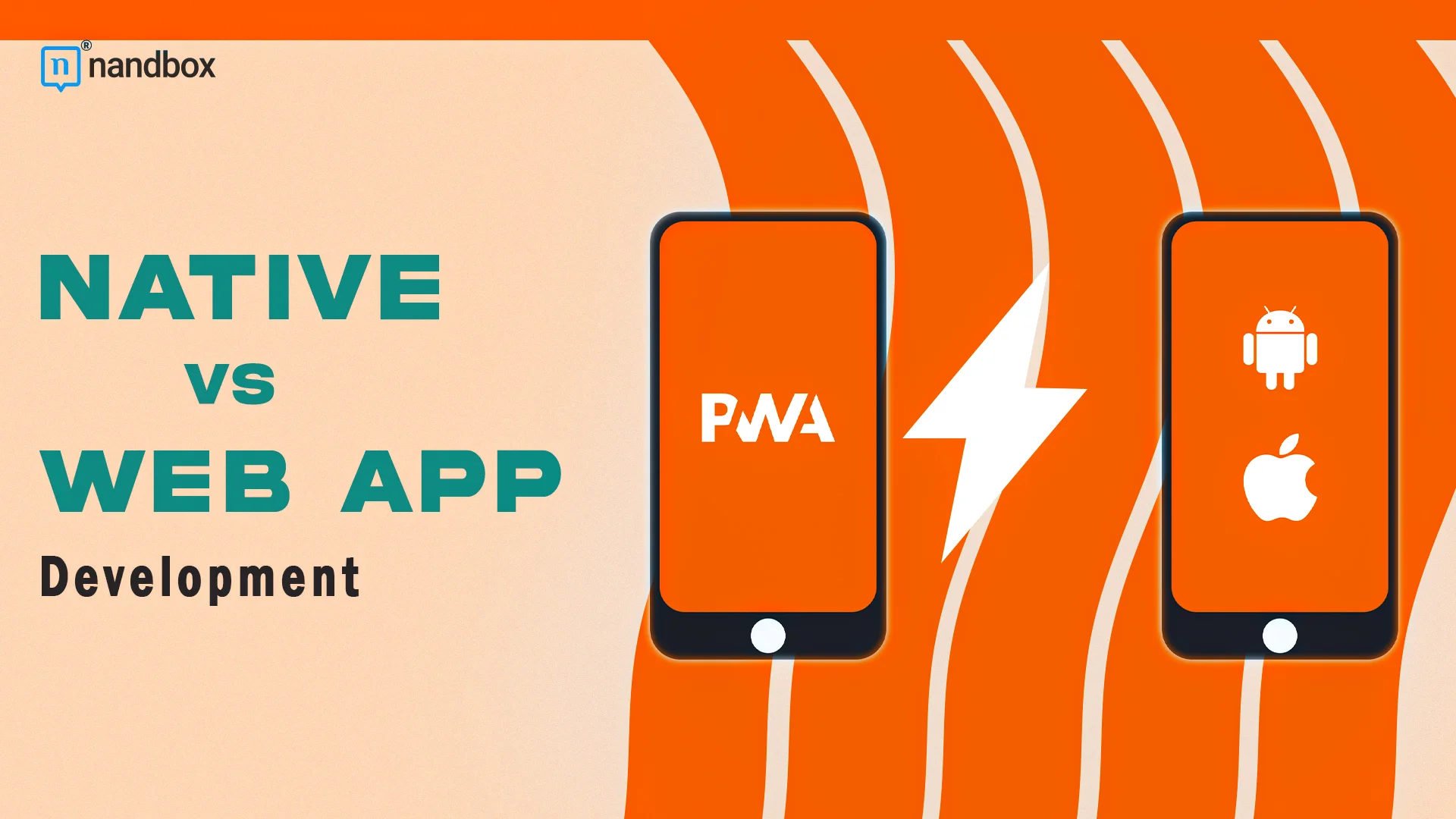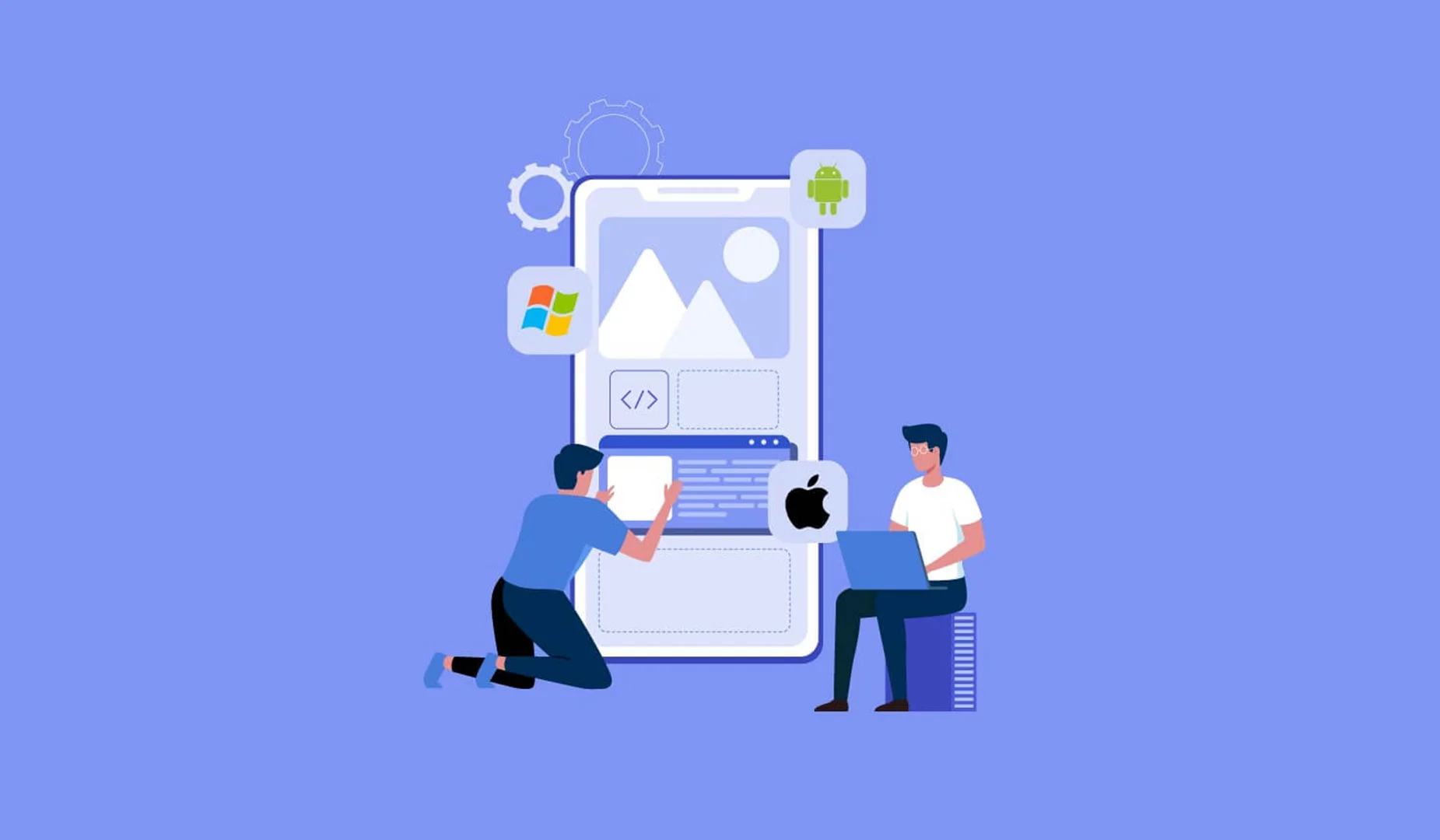Ever feel like you’re so overwhelmed by the amount of new technological advancements that are happening around us nowadays? Well, the app development world in 2025 feels like standing at a bustling crossroads with two equally enticing paths. These two paths are native app development and web app development. With every path from these two, you get offered different and unique things. And with new or unique decisions, they tend to be exciting yet very, very overwhelming at times. Want to delve deeper into this topic to have a better understanding? Let’s go.
If you look into it, you’ll find that native apps beckon with their commitment to unparalleled performance, seamless integration with device hardware, and an immersive user experience. Think of them as if they’re like high-speed F1 cars of the app world. They are simply built for precision and luxury. On the other hand, web apps offer the charm of broad accessibility and cost efficiency. I like to call them the jack of all trades. That is because their approach works across various devices without any need for downloads or updates. They’re the reliable public transit of the digital sphere. That is because they ensure that everyone has the opportunity of hopping on board.
Feeling a Little Lost? Let Me Introduce You Efficiently to Native App Development
But at a crossroads, we always look for a sign that has anything that could lead us to the way we’re heading. Or we seal a crossroad demon deal with Crowley in case you’re affiliated with Supernatural’s Winchester brothers. The thing is, picking the right app development type that you should opt for if you wish to create an app is not always the easiest thing to do. However, in this guide, we will discuss the differences between both, get to know the benefits of each of them, and define each method in order to be able to choose wisely and eliminate any chances of having you lost in today’s digital void. With so much at stake, the journey can feel daunting, but don’t worry—we’re here to make it easier. So, buckle up and grab a coffee as we delve into the nitty-gritty of native and web app development, complete with insights, comparisons, and maybe even a few fun anecdotes to keep things lively. Whether you’re an entrepreneur, a developer, or just someone curious about tech, this is your guide to making the right choice.
What Is Native App Development?
I need you to know and understand that native app development is like crafting a masterpiece that is tailored for the right audience that you target. Each app that you craft or create is specifically designed for a particular operating system. This ensures that your users will feel like it truly belongs to them and understands their needs and preferences. But what do developers do in order to create a smooth native app experience? Well, native app development is all about using specific programming languages like Swift for iOS and Kotlin for Android, for example. This helps them in pouring their expertise into creating apps that run as smoothly as Tom and Jerry’s butter block on their respective platforms. So what would be the end game or the final result here?
The result would be unparalleled app performance. In addition to a rich library of features and apps that feels like it knows your device from the inside and from the outside as well. Imagine with me push notifications that hit just right whenever you think you forgot whatever it is you set a reminder to; it’s always there to remind you. Something like Neville Longbottom’s Remembrall. However, this certain feature of push notifications tells you exactly what you need to remember. Like highlighting a chat that you were having, sending you a notification with a subscription to something that is about to end, a work email, or even someone’s birthday reminder, and most definitely anything in between. Another great feature that you cannot overlook in native apps is the GPS integration feature that helps you never skip a beat.
Understanding Native Apps Comprehensively
Additionally, native app development allows you to have the camera functionality working as if it’s reading our mind. Let me give you an example for better clarification. Take the Uber app as an efficient example of a native app. Without the precision and power of native development, features like real-time navigation, seamless driver tracking, and integrated payment options would lose their significance. Simply put, native apps give developers access to the core capabilities of their device. This makes them ideal for businesses that aim to provide their users with a seamless and premium user experience. But are there any cons to native app development? Let’s see and uncover them all.
Native App Development Cons or Weaknesses
This is where native app development shows its not-so-glamorous side. First off, it’s a commitment. Yes, I am narrowing my eyes at you people who get scared from even thinking about that word and what it holds. Think of it like signing up for two gym memberships at once. Developing separate apps for Android and iOS doesn’t just double the workload; it doubles the price tag, too. And let’s not forget the juggling act of managing two codebases.
You’ll need two specialized teams who speak entirely different tech languages, and trust me, they don’t come cheap. Yup, you’ll wound your wallet a bit but again, think of the amount of revenue that you will gain once your app makes its own market noise and boom! Oh, and then there’s the app store submission process. This is a process that I like to think of as if you’re auditioning for a talent show where the judges, like Simon Cowell, are super picky and love to make you sweat. Native development is undeniably powerful, but this is a method that comes with a steep learning curve, a hearty dose of patience, and a budget that might just have you clutching your wallet a little tighter.
A Cost-Effective Alternative That Suits Everyone’s Financials and Budget
Want an alternative that will cost you differently (and most definitely less)? I have just the perfect solution for you. You can get started with nandbox’s native no-code app builder. This is one native app builder that won’t cost you as much as hiring a developer and will help you develop your app without having to wait for a decade before you get it up and running. With a simple click and a very easy drag-and-drop interface, you’ll be able to create your app in no time and have it in the market before you can even have time to absorb it all in and understand how easy the process went.
Understanding Web App Development: A Quick Overview
Web app development, on the other hand, is like creating the Swiss Army knife of applications. Why? Because this is one development method that is versatile, lightweight, and designed to work for everyone and most definitely everywhere. Forget the hassle of downloads, installs, or running out of storage space; web apps are the minimalist heroes of the app world. These apps are built with trusty web technologies like HTML, CSS, and JavaScript. Moreover, they are powered by modern frameworks such as React and Angular. Web apps deliver powerful experiences right in your browser. Think of Gmail: it’s the quintessential web app. That is because it seamlessly manages your emails, calendars, and tasks without ever asking for a permanent spot on your device.
Worried About Approvals? Don’t. As Simple As That…
But here’s the catch: while web apps boast incredible reach and lightning-fast updates (no app store approvals here), they fall short when it comes to harnessing your device’s full potential. Want to use the gyroscope to create an AR experience or access your phone’s fingerprint scanner for ultra-secure logins? Web apps will shyly excuse themselves from that conversation. The same way I do whenever the conversation is between Mom, Dad, and my little sister. And then there’s the internet dependency. Something that is far away from the idea of stability and accessibility. Why? Because in order for web apps to fully function, a stable internet connection is something that is a must-have, or your app might just leave you hanging. With that infinitely loading circle.
However, if you’re looking for an app that’s quick to build, cost-effective to maintain, and accessible to users from New York to New Delhi, web apps are a compelling choice. They may not pack the same punch or strength as native apps, but when it comes to getting your idea out to the masses, web apps are the ones to watch.
Performance and User Experience: A Key Differentiator
Ever opened an app and thought, “Wow, this looks and feels amazing”? That’s the magic of performance and user experience. When it comes to native apps, they are the reigning champions here in this sector. Because they’re designed for specific platforms, they can fully tap into your device’s power. This allows them to deliver silky-smooth animations, lightning-fast load times, and intuitive navigation. One that just feels right. Imagine scrolling through Instagram, where every swipe, tap, and pinch feels effortless. Yeah, that’s the print that native app development leaves on your heart and definitely on your user’s mind.
Web apps, while making significant strides thanks to innovations like progressive web apps (PWAs), still face challenges in this department. Like I mentioned above, they rely on browsers and on having a stable internet connection, which can introduce lag and performance hiccups. Imagine trying to play a high-octane racing game on a web app. It might work, but the heart-pounding adrenaline rush of a native app would not be there. However, web apps have their own charm: they’re universally accessible, just a click away from anyone. Additionally, they are compatible with almost any device that uses the internet.
For businesses, it all goes down to priorities. If you’re looking to wow users with a sleek, high-performance experience, native apps are what you should opt for. But if your focus is on maximizing reach and keeping things simple and cost-effective, web apps should be your choice in this case. The choice is less about better or worse and more about what fits your app vision, goals, and your audience best.
Development Costs and Time: Which Is More Budget-Friendly?
Money talks, and in the app development world, it doesn’t just talk; it screams from high rooftops. Budget constraints are often the first challenge that you may face in any app project. Furthermore, this is where the debate between native and web apps gets particularly heated. If you’re working with a limited budget, web apps can feel like a breath of fresh air. But why is that? A single codebase that works seamlessly across all platforms means you save not only on the initial development but also on ongoing maintenance. It’s like buying one pair of shoes that matches every outfit you have in your wardrobe. It’s a win for both practicality and your wallet. Plus, web apps typically have a faster time to market, which is crucial if you’re trying to capitalize on a trending idea before the hype fades away like yesterday’s newspaper (if they still print those). And yes, I am a Gen Z or a Zillennial, as I like to call myself. Sue me for not knowing.
Native apps, on the other hand, come with a significantly higher price tag. Why? Because developing a native app means creating two separate versions: one for iOS and another for Android. This effectively doubles your costs and extends your development timeline. It’s like having to design two entirely different wardrobes for your app. One that fits the sleek aesthetic of Apple users and another tailored to the diverse landscape of Android devices. While the result is undeniably chic and polished, you might find yourself wondering, “At what cost will I do this?”
Let’s Break It Down for Further Clarity
Native Apps:
- High initial investment.
- Separate teams for each platform mean double the effort and expense.
- Development time is measured in months, sometimes stretching into a year for complex apps.
Web Apps:
- Cost-effective, thanks to a unified codebase.
- Requires fewer resources and a smaller team.
- Development time is measured in weeks, making it perfect for quick launches.
But the story doesn’t end there. While web apps are great for delivering simple, accessible solutions to a broad audience, native apps excel in crafting rich, feature-heavy experiences tailored to specific user needs.
Accessibility and Reach: Which One Goes Further?
When it comes to accessibility, web apps are the undisputed champions, effortlessly taking the crown. Why? Because all you need is a browser and a decent internet connection, and you’re good to go. No downloads, no waiting, no worrying about running out of storage on your device. This makes web apps a dream for users scattered across different platforms and devices. Imagine this scenario: You launch a web app today, and by tomorrow, someone in bustling Tokyo, another in chic Paris, and yet another in a rural village in India can all access it with a simple click. It’s like opening a café that anyone in the world can visit without leaving their home.
The beauty of web apps lies in their universality. Whether you’re on a shiny new iPhone, a budget Android device, or even an ancient desktop computer. Web apps have the ability to ensure that no one feels left out. And let’s not forget how they seamlessly bypass the dreaded app store approval process. Want to release a critical update or a quick hotfix? With a web app, you can roll it out instantly. All without waiting for a green light from Apple or Google.
Native Apps and App Stores: A Complication, A Mild One…
Native apps, however, bring their own charm to the table, even if they aren’t as immediately accessible. Their secret weapon? App stores. The Google Play Store and Apple App Store are like digital hypermalls where millions of users actively browse for new apps every day. Getting your app featured here can be a game-changer for visibility and credibility. Plus, native apps can make better use of hardware features like GPS, cameras, and sensors. This helps them in providing a more integrated and tailored experience. But this comes at a cost: strict app store guidelines, lengthy approval processes, and sometimes the frustration of resubmitting for minor adjustments.
So, what’s the verdict? To be fair, there shouldn’t be one. That is because it all again depends on your app’s vision and your own development needs. If instant, global access and ease of use are your top priorities, web apps are the way to go. They’re like the open highways of the digital world, welcoming everyone. But if you’re chasing credibility, discoverability, and a chance to be featured in a digital shopfront visited by millions, native apps hold the key. Ultimately, it’s about choosing the type of visibility that aligns with your app’s goals and vision. And remember, whether it’s a web app or a native one, every user you reach is another step closer to success.
Offline Capabilities: Who Takes the Lead?
Picture this: you’re 30,000 feet in the air on a long-haul flight, with no Wi-Fi and an urgent need to access your app. Or maybe you’re on a remote hiking trip, far from any cell towers, but still craving your favorite app’s features. Who’s got your back in this moment of digital despair? Native apps, hands down. These offline warriors excel at storing data locally on your device, enabling users to perform tasks even when they’re completely off the grid. Take Spotify as your main example. Its offline mode is a lifesaver for music lovers, letting you curate the perfect playlist for your plane ride or wilderness adventure. All without worrying about a single bar of network coverage. It’s like having a trusty Swiss Army knife, one that allows you to be always ready, no matter where you are.
Web apps, on the other hand, are a bit like that friend who’s absolutely brilliant and fun but has one small little flaw or shall I say, unique character. Why? Because they always need a Wi-Fi connection to function properly. Sure, Progressive Web Apps (PWAs) have made notable strides, with features like offline caching for basic tasks. However, they still fall short compared to native apps when it comes to fully functioning without the internet. Imagine trying to watch your favorite Netflix show offline via a web app. It’s as if Icarus flew and the sun never melted his wings. Simply, it isn’t possible.
Long Story Short?
So, what’s the takeaway? If your app’s purpose revolves around users needing uninterrupted access—like a journaling app, a game, or even a navigation tool—native development is the obvious choice. It’s like carrying a backpack filled with everything you could possibly need, no matter where life takes you. Web apps, for all their strengths, still rely heavily on a stable internet connection, making them less reliable when you’re flying high or venturing into today’s digital void.
Future Trends in Native and Web App Development
Ah, the future, something I’d rather contemplate from afar rather than really think about. But isn’t that all of us? The future: a glittering realm of possibilities where the lines between native and web apps continue to blur. As we charge into the rest of 2025, one thing becomes crystal clear: the future isn’t a tug-of-war between native and web apps. As a matter of fact, it’s a beautiful hybrid dance between two who haven’t memorized the steps but rather are improvising as they go. Progressive Web Apps (PWAs) are rapidly gaining traction, borrowing some of the best features from their native counterparts. With push notifications, offline access, and sleek app-like interfaces, PWAs are bridging the gap between accessibility and functionality. Imagine a PWA that lets you book flights, store your boarding pass offline, and send you real-time gate changes. That is all possible without needing to download a bulky app. I know, convenience has never been so elegant.
How Native App Development is the Future
Native apps, however, are not resting on their laurels. They’re diving headfirst into great technological advancements like artificial intelligence, augmented reality (AR), and machine learning. The results? Experiences that feel downright futuristic. Picture a travel app that uses AR to guide you through the ancient and most aesthetic streets of Rome. Imagine an app that can help you in overlaying historical facts on ancient ruins as you explore. Or a fashion app that lets you try on outfits virtually before committing to a purchase. It’s as if the apps are saying, “Why stop at serving users when we can wow them?” So what’s the key takeaway for you here? The future isn’t about choosing sides; it’s about embracing the synergy between these two development approaches. When you blend the best of both worlds, developers will be able to craft apps that are not just functional but downright unforgettable. And who doesn’t want their app to be the one users rave about in 2025 and beyond?
Wrapping It Up!
Now that you’re here, you must by now know and understand the difference between native app development and web app development. Two methods that are more than common and known in the realm of app creation. If you wish to create an app and don’t know where to start, it would be a good idea to start with understanding your options first before diving into something.
One of the greatest options for app creation is a no-code app builder like nandbox’s. However, our app builder is not only no-code but also a native app builder. I know that app development could mean that you have to code things from scratch and program the whole thing. But not with nandbox. No, our app builder is no-code. One that has a great variety of pre-made templates that all you have to do is choose one from them and start customizing it. The customization goes as follows: you browse for the features that you wish to implement in your app, drag and drop them in your app development window, and voila! You have yourself an app! It is easy, cost-effective, and very useful in the realm of native app development. Sign up now and breathe life into your app idea to break the market with a seamlessly functioning app from nandbox’s native no-code app builder.
In Summary
- Native App Development:
Tailored for specific operating systems (iOS/Android) using languages like Swift and Kotlin.
Offers unmatched performance, hardware integration (e.g., GPS, camera), and an immersive user experience.
Ideal for businesses seeking premium user engagement.
Cons: Higher cost, longer development time, and dual codebases.
- Web App Development:
Built with HTML, CSS, and JavaScript for universal browser access.
Cost-effective, quick to develop, and no need for downloads or updates.
Cons: Limited device integration, dependent on internet connectivity.
- Key Differences:
Performance: Native apps excel with smooth animations and fast load times; web apps may lag due to browser reliance.
Cost: Web apps are budget-friendly; native apps require higher investment but deliver premium quality.
- Pro Tip: For streamlined native app development without high costs, consider no-code solutions like nandbox.






